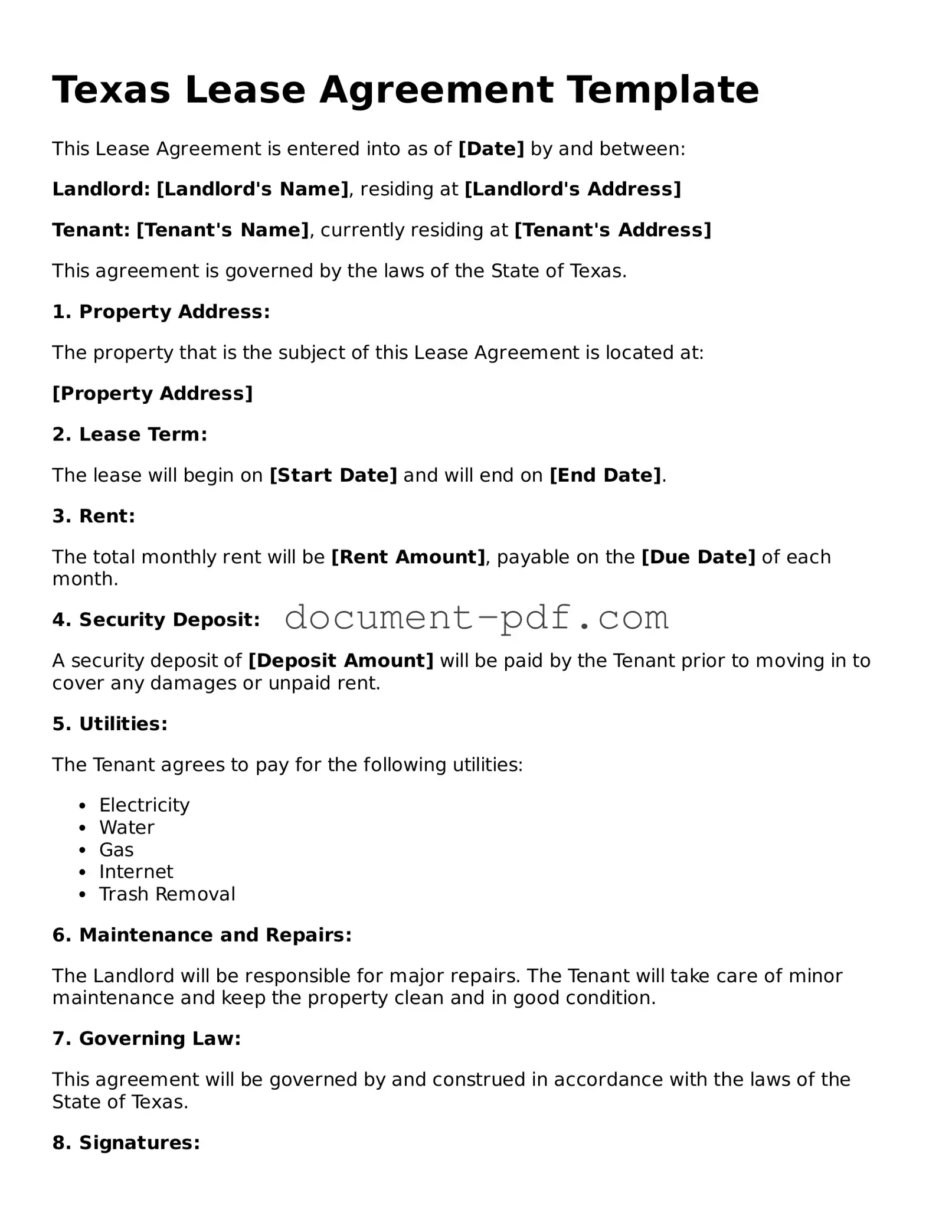The Texas Lease Agreement form shares similarities with a Residential Lease Agreement. Both documents outline the terms under which a landlord rents a residential property to a tenant. Key elements such as rental payment amounts, duration of the lease, and responsibilities for maintenance and repairs are typically included. Both agreements aim to protect the rights of both parties while establishing clear expectations for the rental relationship.
Another document akin to the Texas Lease Agreement is the Commercial Lease Agreement. This type of lease is used for business properties rather than residential ones. Similar to the Texas Lease Agreement, it details the rent, lease term, and maintenance obligations. However, it often includes additional clauses related to business operations, zoning laws, and modifications to the property that are specific to commercial activities.
The Month-to-Month Rental Agreement also resembles the Texas Lease Agreement, particularly in its purpose of outlining the rental terms. This agreement allows for a more flexible arrangement, as it can be terminated with shorter notice. While the Texas Lease Agreement typically covers a fixed term, the month-to-month agreement adapts to changing circumstances, making it suitable for tenants who may not want a long-term commitment.
A Sublease Agreement is another document that shares characteristics with the Texas Lease Agreement. This agreement allows a tenant to rent out their leased property to another person. It must align with the original lease terms and often requires the landlord's consent. Like the Texas Lease Agreement, it specifies rent amounts and duration, ensuring that all parties understand their rights and obligations.
The Rental Application form is similar to the Texas Lease Agreement in that it is part of the leasing process. While the lease agreement itself outlines the terms of rental, the application collects information about potential tenants. Both documents are crucial for landlords to evaluate applicants and establish a rental relationship based on agreed-upon terms.
The Lease Renewal Agreement is another document that aligns closely with the Texas Lease Agreement. This agreement is used when both parties agree to extend the lease for an additional term. It restates the original lease terms and may include updated rental amounts or conditions. This document ensures continuity in the landlord-tenant relationship while adapting to any changes that may have occurred since the original agreement.
The Rent-to-Own Agreement shares some features with the Texas Lease Agreement, particularly in its structure. This type of agreement allows tenants to rent a property with the option to purchase it later. It includes terms related to rental payments and the purchase price, similar to a lease. Both agreements establish a framework for the use of the property, though the rent-to-own agreement incorporates future ownership considerations.
The Lease Purchase Agreement also bears resemblance to the Texas Lease Agreement. Like the rent-to-own agreement, it allows tenants to rent with the intention of buying the property. It outlines the terms of the lease while specifying conditions under which the tenant can purchase the property. This document combines elements of leasing and purchasing, providing a pathway to ownership for tenants.
Understanding the various documents involved in property transactions is crucial, including the Texas Motor Vehicle Bill of Sale form, which is essential for vehicle ownership transfer. This legal document acts as a safeguard for both the buyer and seller, ensuring clarity in the transaction. For those looking to create or obtain such documents, resources like Texas PDF Templates can be invaluable.
The Roommate Agreement is similar to the Texas Lease Agreement in that it governs the living arrangements among multiple tenants sharing a rental property. This agreement outlines responsibilities regarding rent payments, utilities, and shared spaces. While the Texas Lease Agreement is typically between a landlord and a tenant, the roommate agreement focuses on the relationships among tenants, ensuring clarity in shared living situations.
Finally, the Lease Assignment Agreement is comparable to the Texas Lease Agreement in that it allows a tenant to transfer their lease rights to another party. This document must adhere to the terms set forth in the original lease. It ensures that the new tenant assumes the obligations and rights of the lease, similar to how the Texas Lease Agreement defines the responsibilities of the original tenant and landlord.
